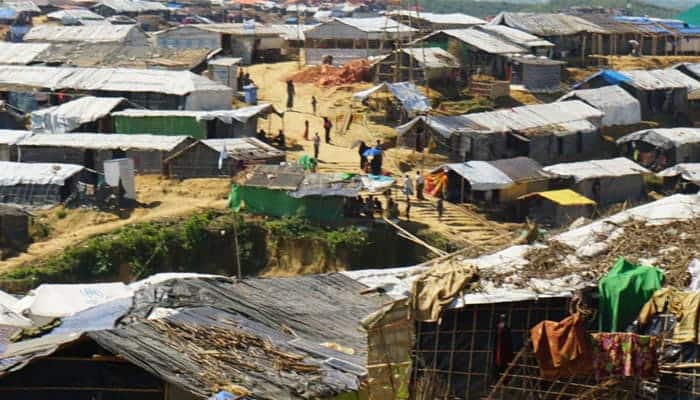Providing Clean Water to 750,000 Refugees
Advisian
Water Security and Humanitarian Crisis
Key Project Details
- Project: Water Security and Humanitarian Crisis
- Infrastructure Delivered: Clean, reliable water wells for refugee camps
- Owner: The United Nations
- Lead Engineers: Advisian
- Completion Date: 2019

Geotechnical analysis allowed Advisian to evaluate the geology of the Teknaf Peninsula and determine the location and characteristics of aquifers. After discovering local aquifers were smaller and more discreet than in other areas of Bangladesh, Advisian advised the United Nation to dig deeper water wells.
Struggling to Provide Refugees with Water
When nearly 750,000 Rohingya refugees fled human rights abuses in 2017 and arrived in the Teknaf Peninsula of Bangladesh from a neighboring country, they faced a new threat to their well-being. Since the dry season in this area of Bangladesh is five months long, shallow boreholes had to be dug to provide water, but 80% of them became contaminated by overflowing latrines. Engineering consultant Advisian had to determine how to improve the availability of clean water in the area quickly to improve conditions at the refugee camps.
Challenging Conditions during the Arid Season
Advisian’s specific goal was to support the refugees during the most arid time of the year in Bangladesh. The ideal solution would be to create aquitard-protected, high-yielding aquifers that could supply a sustainable source of clean drinking water. Though Bangladesh is a low-lying country that experiences seasonal monsoons, the hydrogeological conditions proved challenging, as any rainfall during the dry season has a negligible impact on both surface water reservoirs and groundwater aquifers. To determine how to produce clean, productive wells, Advisian had to undertake detailed geotechnical analysis.
Determining Aquifer Conditions with Geophysical Visualization
Advisian turned to Seequent applications to characterize the water resources available. With Seequent’s powerful, detailed geophysical 3D visualization and modeling, Advisian determined that geology of the refugee camps was quite different from the conditions presupposed for the peninsula. The analysis revealed that continuous aquifers found elsewhere in Bangladesh did not exist near the refugee camps, and the aquifers present were actually small and relatively discreet. This helped Advisian determine that to succeed, they needed to dig deeper wells.
Producing More Effective Water Wells
As a result of Advisian’s analysis, the United Nations adjusted its strategy. To accommodate the area aquifers, they dug a smaller number of water wells, but each one penetrated deeper into the ground. These new wells provided an abundant source of clean water, enabling the UN to provide vital humanitarian aid to the refugees. Additionally, since they were able to produce more water from fewer wells, they reduced the need for drilling, reducing the environmental impact of excavating the wells.
The Impact
Contributing to sustainable and resilient infrastructure, and to progress on the U.N. Sustainable Development Goals:
- Expand reservoirs to nearly 750,000 Rohingya refugees to ensure access to clean water.
- Prevent water wells from going dry or becoming contaminated during drought periods.
"They’re all looking at the same datasets, all having questions and queries, but perhaps have different interests. With View, everyone has control of the scale, and they can highlight the particular model features they’re interested in.”
Paul Bauman, Advisian
